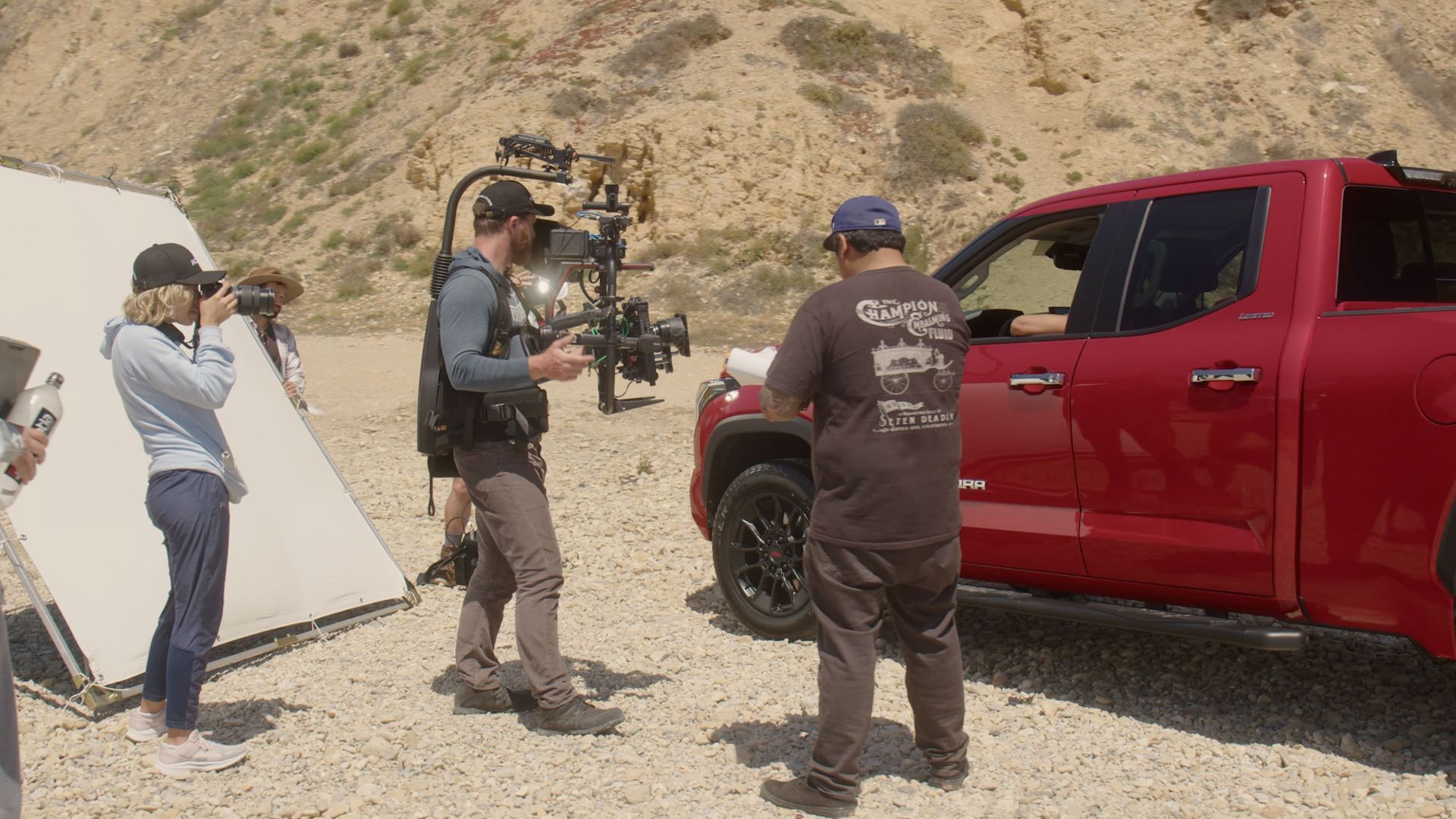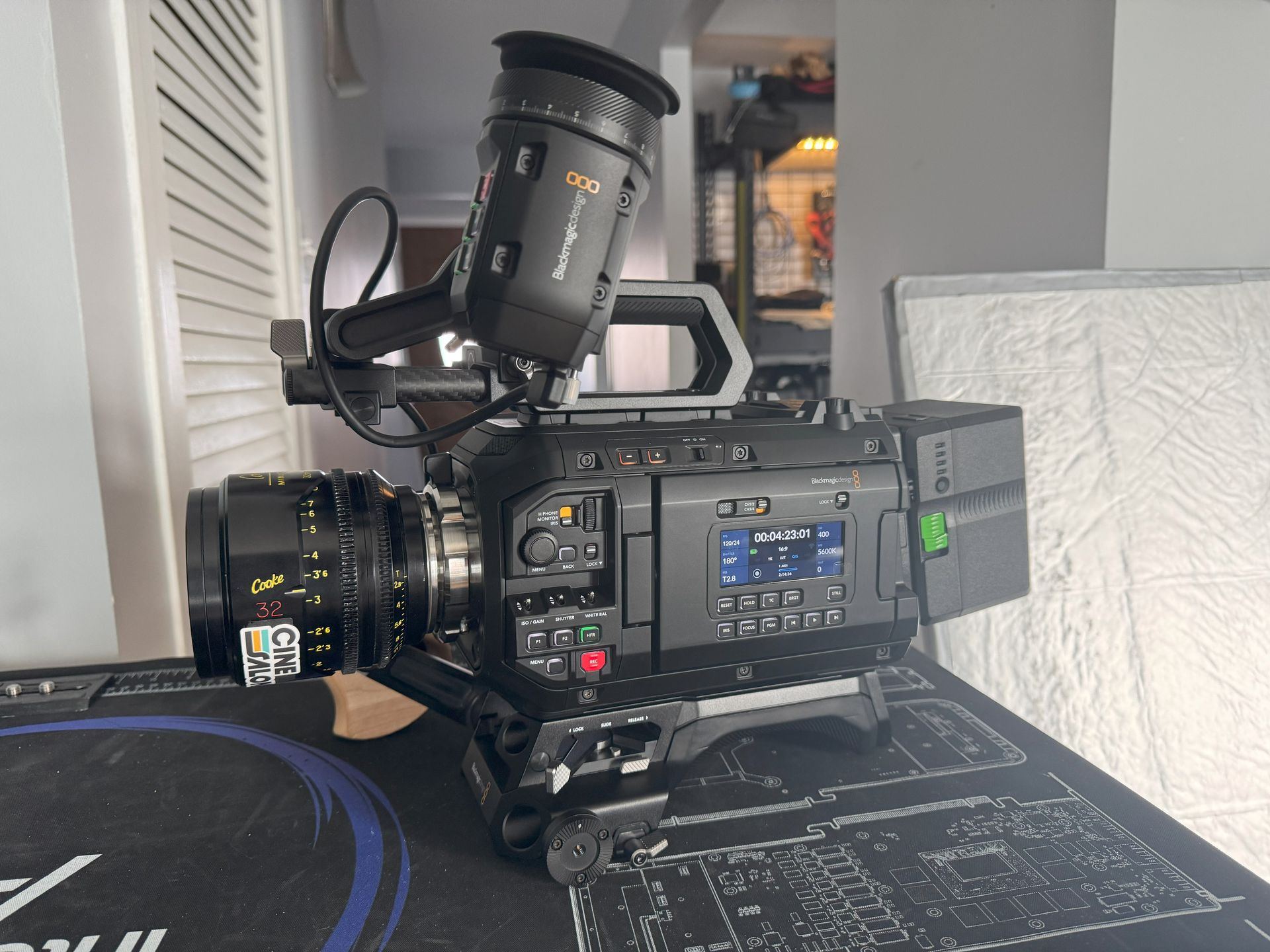
YouTube, the world's largest video-sharing platform, has revolutionized content consumption. From music videos to tutorials, vlogs to movie trailers, it houses an immense variety of content. With over two billion logged-in users monthly, YouTube is an ideal place for creators to share their work and connect with audiences worldwide.
Importance of Optimizing Videos for YouTube Search
YouTube isn't just a platform for sharing and watching videos; it's also the second-largest search engine after Google. Given the number of videos uploaded every minute, standing out is a significant challenge.
This is where video optimization comes into play. Optimizing your videos makes them more discoverable, allowing you to reach a larger audience, increase views, and potentially boost your channel's growth.
Overview of the Guide
In this guide, we'll dive into the world of YouTube Search Optimization. We will explain YouTube's algorithm, discuss the importance of video SEO, and provide practical tips to optimize your videos. From researching keywords to user engagement, we'll cover it all.
Whether you're a budding YouTuber or a seasoned creator, this guide is designed to help you navigate YouTube's landscape and maximize your channel's potential.
Join us on this journey to understand the ins and outs of YouTube search optimization. Let's explore how to get your videos in front of the right audience at the right time.
Understanding YouTube's Algorithm
Before you can start optimizing, it's crucial to understand how YouTube's algorithm works. This algorithm is a set of rules that determine which videos appear in search results, on the homepage, or in the 'recommended' section. Its goal is to provide users with relevant content while maximizing their time spent on the platform.
Factors That Influence the Algorithm
YouTube's algorithm uses several factors to rank videos. Here are the key elements:
- Watch Time: This measures how much viewers spend watching your videos. The longer the watch time, the better your video will rank.
- User Engagement: This includes likes, comments, shares, and subscriptions. Higher engagement signals that viewers find your content valuable, boosting your video's visibility.
- Relevance: This is determined by your video's metadata, which includes description, title tags, and how well it matches the user's search query.
Recent Updates to the Algorithm
Keeping up with the algorithm's updates is vital to staying ahead. Over the years, YouTube has introduced some changes to increase user satisfaction. The platform now prioritizes videos that lead to longer overall watch time rather than immediate clicks. They're continuously improving their systems to better surface and recommend content that adheres to their community guidelines, encouraging creators to produce high-quality, policy-compliant content.
Remember, the algorithm is designed to benefit both the viewer and the creator. For viewers, it's about finding relevant, high-quality content. For creators, it's about delivering their content to the right audience.
Importance of Video SEO
Video SEO (Search Engine Optimization) is the practice of optimizing your videos to make them more discoverable in search engine results. Just like website SEO, the aim is to use certain techniques to rank higher in search results – in this case, YouTube's.
Importance of Video SEO in YouTube Content Discovery
Think of YouTube as a giant library. Finding a particular book in this library would be a nightmare without a proper cataloging system. Similarly, without Video SEO, your content may get lost in the vast sea of YouTube videos.
Optimizing your videos for search helps YouTube's algorithm understand your content better. This leads to more accurate categorization and recommendation, increasing your video's visibility to the right audience.
Difference between Website SEO and Video SEO
While both website SEO and video SEO aim at improving search engine rankings, they target different kinds of content and platforms. Website SEO focuses on optimizing text-based content for search engines like Google, whereas video SEO is about making your videos more discoverable on platforms like YouTube.
The techniques used also differ. Website SEO involves optimizing elements like meta descriptions, header tags, and website speed. Video SEO, on the other hand, involves optimizing titles, video descriptions, tags, and thumbnails.
Video SEO also considers factors like watch time and viewer engagement, which are unique to video content.
Mastering Video SEO'll make it easier for YouTube's algorithm to find, understand, and recommend your videos. In the next sections, we'll dive into these techniques and show you how to apply them effectively.
How to Optimize Videos for YouTube Search
Researching Key word for YouTube
Keyword research involves identifying popular words and phrases people enter into search engines. In the context of YouTube, it's about finding what the the people you are targeting is searching for when looking for videos like yours.
Importance of Keyword Research for YouTube SEO
Keyword research is a vital component of YouTube SEO. By knowing what your audience is searching for, you can tailor your content to meet their needs. This increases your videos' relevance, improves their ranking in search results, and makes them more discoverable.
Tools for Keyword Research
There are several tools available for keyword research. These include:
- YouTube's Search Suggest: Start typing a keyword in the YouTube search bar and see what other search terms are suggested.
- Google Trends: This tool lets you see how a keyword's popularity has changed over time and compare it to other keywords.
- Keyword Tool: This tool generates keyword suggestions using YouTube's auto-suggest feature.
Remember, while these tools provide valuable data, it's essential to understand your audience. The best keywords often come from knowing what your viewers want to see.
Techniques for Finding the Best Keywords
Here are some tips to find the best keywords:
- Start with broad terms: Start with a broad keyword related to your video content and narrow it down from there.
- Use keyword variations: Don't stick to one keyword. Explore synonyms, related phrases, and variations.
- Consider search intent: Try to understand what users want to find when they type a particular keyword.
- Look at the competition: Analyze top-ranking videos for your target keywords. See what they're doing right and how you can do better.
Incorporating Keywords in Your Content
Once you have your keywords, it's time to incorporate them into your video. This includes your video title, description, tags, and even the video content itself. Just remember to use them naturally. Keyword stuffing (excessive use of keywords) can lead to a poor viewer experience and negatively impact your SEO.

Creating Quality Content
Importance of Quality Content in YouTube SEO
While technical SEO is critical, the heart of your YouTube channel will always be content. High-quality content is crucial to attract and retain viewers. Remember, YouTube's algorithm favors videos that keep users on the platform longer. If your content is engaging and valuable, viewers are more likely to watch it in its entirety, boosting your watch time.
Factors That Determine Content Quality
Several factors determine content quality:
- Video Quality: High-definition (HD) videos look more professional and are more enjoyable to watch.
- Sound Quality: Clear audio is essential. Bad sound quality can discourage viewers, no matter how good your video looks.
- Content Relevance: Your content should be relevant and interesting to your target audience. It should provide value, whether in entertainment, education, or inspiration.
Techniques for Improving Content Quality
Improving content quality isn't just investing in the best camera or microphone. Here are some techniques to enhance your content:
- Plan Your Content: Before you hit record, have a clear plan. Know what you want to say and how you'll say it.
- Edit Carefully: Good editing can make a huge difference. Remove unnecessary parts, add subtitles, use engaging graphics, and ensure the video flows smoothly.
- Stay Up-to-date: Stay current with trends in your niche. This will help you produce relevant and engaging content for your audience.
- Request Feedback: Ask your viewers for feedback. They can provide valuable insights to improve your content.
Examples of High-Quality YouTube Videos
Learning from successful creators can be highly beneficial. Take time to watch popular videos in your niche. Notice how they structure their content, engage with their audience, and use visuals and sound. But remember, don't copy. Use these insights to create unique content that reflects your style and resonates with your audience.
Producing quality content should always be your top priority. It's the basis of your relationship with your viewers and the foundation of successful YouTube SEO.
Optimizing Video Descriptions
Video descriptions play a significant role in YouTube SEO. They help YouTube's algorithm understand your video's content and context, affecting how it's indexed and when it's shown in search results. An adequate description can increase your video's visibility and attract more viewers.
Guidelines for Writing Effective Video Descriptions
Writing compelling video descriptions requires some careful thought. Here are some guidelines:
- Incorporate Keywords: Use your target keywords naturally in the first few lines. YouTube only displays the first two or three lines of the description (about 100 characters) before the 'Show More' prompt, so put important information and keywords upfront.
- Describe the Video: Provide an accurate summary of what viewers can expect from the video. This can improve your video's discoverability and entice viewers to watch it.
- Include CTAs: Encourage viewers to like, share, comment, subscribe, or visit your website. This can increase engagement and channel growth.
- Add Useful Information: You can include additional information like video timestamps, links to resources mentioned in the video, or social media handles. This can enhance the viewer's experience.
Best Practices for Formatting Video Descriptions
Format your description to make it easy to read. Use bullet points or numbered lists where applicable. Break up blocks of text into short paragraphs. Remember that many viewers will be on mobile devices, where large text blocks can be challenging to read.
Avoiding Common Pitfalls
Avoid keyword stuffing. It leads to a poor user experience, and YouTube may also penalize your video. Also, make sure all links are relevant and safe. Broken or misleading links can lead to a poor user experience and harm your channel's reputation.
With a well-optimized description, you'll help YouTube's algorithm understand your video and make it more discoverable to the right audience.

Leveraging Tags and Categories
Tags play a crucial role in the classification of videos on YouTube. They help the algorithm understand your video, aiding in correctly indexing your content. This, in turn, helps your video appear in relevant searches, increasing its visibility.
How to Use Tags Effectively
Using tags effectively can significantly improve your video's discoverability. Here are some tips:
- Use Relevant Keywords: Tags should include your target and related keywords. They should reflect your content accurately.
- Be Specific and Broad: Use a mix of specific and broad tags. Specific tags could include exact phrases a viewer might search for, while general tags could be related to a more overall topic or category.
- Don’t Overuse: While adding as many tags as possible is tempting, focus on quality over quantity. Only use titles that are truly relevant to your video.
Importance of Video Categories
Selecting the correct category for your video can boost its visibility by grouping it with similar content. This can expose your video to a broader audience and increase the likelihood of it being found by viewers interested in that category.
Selecting the Right Category
When selecting a category, choose the one that best aligns with your video's topic or the primary audience you want to reach. If you're unsure which type fits best, research successful videos similar to yours to see what categories they use.
Common Mistakes in Tag and Category Selection
Avoid irrelevant tags and categories. These won't help your video get found by suitable viewers and might hurt your video's rankings if viewers click away because your video isn't what they expected. Also, remember to review and update your tags and categories periodically, as trends and search behavior can change over time.
Incorporating well-chosen tags and categories can significantly enhance your YouTube SEO strategy by making your content more discoverable to suitable viewers.
Importance of Thumbnails and Closed Captions
Thumbnails act as video cover. An attractive, well-designed thumbnail can grab viewers' attention, enticing them to click and watch your video.
Guidelines for Effective Thumbnails
Creating a great thumbnail requires a balance of aesthetics and relevance. Here are some tips:
- Include Text: A catchy phrase or the video title can spark interest. Keep it concise and ensure the text is readable, even at a small size.
- Use High-quality Images: Crisp, clear images make your thumbnail look more professional and appealing.
- Showcase Key Elements: Include elements from your video that can pique viewers' curiosity and hint at your content.
- Maintain Consistency: If you have a series of videos or a specific branding style, maintain consistency in your thumbnails to establish brand recognition.
Role of Closed Captions in YouTube SEO
Closed captions not only make your videos accessible to a broader audience but also enhance your video's SEO. YouTube indexes closed captions, meaning the algorithm can crawl the text, potentially improving your video's search visibility.
Implementing Closed Captions
YouTube can auto-generate captions, but they aren't always accurate. For better results, you can:
- Create Your Own: Write your transcript and upload it to YouTube. This gives you control over accuracy.
- Use Captioning Services: Several online services can create professional captions for a fee.
- Edit Auto-generated Captions: Correct mistakes in YouTube's auto-generated captions for a quick fix.
Avoiding Thumbnail and Caption Pitfalls
Avoid misleading thumbnails and captions. They may generate initial clicks, but if viewers feel deceived, they'll leave quickly, hurting your watch time. Also, poorly designed thumbnails or inaccurate captions can give a negative impression of your content.
Creating compelling thumbnails and accurate closed captions can improve your video's engagement and discoverability, enhancing your YouTube SEO.
Encouraging Viewer Engagement
Viewer engagement is a critical factor that YouTube's algorithm considers when ranking videos. High engagement indicates that your content resonates with viewers, leading to longer watch times, more shares, and, ultimately, higher visibility.
Ways to Boost Engagement
There are several ways to boost viewer engagement in your videos:
- Call to Action: Encourage viewers to like, comment, subscribe, and share. A gentle reminder can significantly increase engagement rates.
- Engage with Comments: Reply to comments on your videos. This not only fosters a sense of community but also encourages further engagement.
- Host Q&As or Live Videos: These interactive formats can increase real-time engagement.
Importance of Video End Screens
End screens can enhance engagement by directing viewers to more of your content. Use them to promote your other videos, encourage viewers to subscribe, or link to your website.
How to Effectively Use End Screens
Here are some tips to effectively use end screens:
- Plan Ahead: Allocate your video's last 5-20 seconds for the end screen.
- Be Strategic: Choose relevant videos or playlists to recommend. Guide your viewers to more content they would be interested in.
- Test and Analyze: Experiment with different end-screen layouts and calls to action. Use YouTube analytics to track which setups drive the most engagement.
Common Engagement Pitfalls to Avoid
Avoid asking for engagement without providing value. Viewers are more likely to engage if they find your content useful, entertaining, or inspiring. Also, avoid overwhelming viewers with too many calls to action. A focused request is often more effective.
Boosting viewer engagement effectively signals the algorithm that your content is valuable, leading to improved search visibility and more success on YouTube.
Using YouTube Analytics for SEO
YouTube Analytics provides valuable insights into how your videos are performing. Understanding these metrics can help you optimize your content and YouTube SEO strategy.
Key Metrics to Monitor
Specific metrics are beneficial for SEO:
- Watch Time: This measures the total minutes viewers spend watching your videos. High-watch time signals to YouTube that your content is engaging.
- Audience Retention: This shows how long viewers stay watching a particular video. High audience retention can boost your video's visibility in the algorithm.
- Traffic Source Types: This reveals how viewers find your videos, whether through searches, suggested videos, or external sources. This can help identify successful keywords and areas for improvement.
- Engagement Reports: These provide data on likes, shares, comments, and subscribers, helping you gauge viewer interaction with your content.
Leveraging Analytics to Improve SEO
Analytics can guide your SEO efforts:
- Keyword Optimization: If viewers find your video through search, review the terms they use. You may discover new keywords to target.
- Content Adjustment: If a video has high audience retention, analyze its success and apply those strategies to future videos.
- Engagement Improvement: If engagement is low, try tweaking your call to action, responding more to comments, or creating more engaging content.
Avoiding Common Mistakes with Analytics
Don't ignore the data. Even if you think your content is excellent, the numbers don't lie. If your videos are underperforming, use the analytics to understand why and adjust accordingly. Also, avoid getting discouraged by short-term dips. Look for long-term trends and growth.
Effectively using YouTube Analytics can significantly improve your YouTube SEO efforts by providing data-driven insights into your performance, helping you make informed decisions about your content and optimization strategies.
Final Thoughts
Mastering YouTube SEO is an ongoing process that involves understanding the platform's algorithm, leveraging best practices, and staying updated with the latest trends. It combines well-crafted content, strategic use of keywords, engaging thumbnails, viewer interaction, and data-driven decisions.
Remember, while the technical aspects are essential, the heart of YouTube SEO is creating content that resonates with your audience. Focus on delivering value, engaging with your viewers, and continuously improving your strategies.
With persistence, adaptation, and creativity, you can optimize your videos effectively for YouTube search, increasing your visibility and fostering growth on the platform. Embrace the journey of YouTube SEO—it's an integral part of your path to YouTube success.
References
The following resources provide further information and insights on optimizing videos for YouTube searches:
- "YouTube for Creators": YouTube's official resource for creators. It offers valuable insights, best practices, and updates about the platform. https://creatoracademy.youtube.com/page/home
- "The Ultimate Guide to YouTube SEO" by HubSpot: This comprehensive guide delves into various aspects of YouTube SEO, offering tips and techniques to improve your video rankings. https://blog.hubspot.com/marketing/youtube-seo
- "Ranking YouTube Videos in 2023" by Backlinko: An up-to-date guide detailing SEO strategies specifically for YouTube, using the latest algorithm updates and trends. https://backlinko.com/how-to-rank-youtube-videos
- "YouTube SEO: Optimizing Videos for YouTube Search" by Neil Patel: SEO expert Neil Patel shares effective tips for optimizing videos for YouTube search. https://neilpatel.com/blog/youtube-seo/
- "How to Use YouTube Analytics" by Hootsuite: This article guides you on using YouTube analytics to improve your channel's performance. https://blog.hootsuite.com/youtube-analytics/
Use these resources to continue learning about YouTube SEO, stay updated with changes, and improve your video optimization strategies.

Get total clarity on your video marketing and paid media with our FREE comprehensive data audit.







